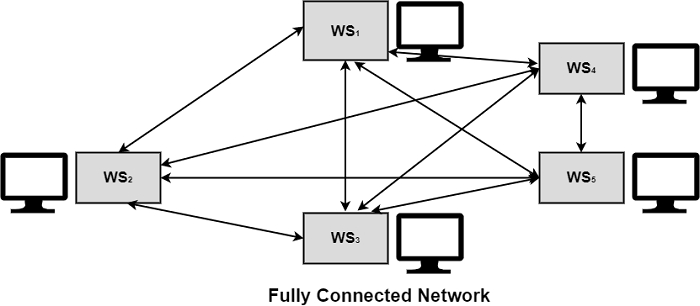
 Data Structure
Data Structure Networking
Networking RDBMS
RDBMS Operating System
Operating System Java
Java MS Excel
MS Excel iOS
iOS HTML
HTML CSS
CSS Android
Android Python
Python C Programming
C Programming C++
C++ C#
C# MongoDB
MongoDB MySQL
MySQL Javascript
Javascript PHP
PHP
- Selected Reading
- UPSC IAS Exams Notes
- Developer's Best Practices
- Questions and Answers
- Effective Resume Writing
- HR Interview Questions
- Computer Glossary
- Who is Who
What is Fully-Interconnected Network Topology?
In this topology, every node is connected using a separate physical link. Each computer network has a direct dedicated link, i.e., point to point connection with all other network computers. Each computer has its control and decision power for communication priorities.
It is a very reliable topology because any transmission line’s failure only affects the transmission between the two connected computers. The communication or message is high-speed and has mostly a full-duplex mode, but at the same time, a large number of communication lines make the network costly as for nodes lines or links are required.

Advantages
The advantages of the tree network topology are as follows −
- The connection is very quick between any two nodes.
- The topology is very reliable as the failure of any line does not affect another link.
- The control among nodes is distributed.
- Each node does not require routing capability.
Disadvantages
The disadvantages of the tree network topology are as follows −
- It is a very costly topology as if there are n nodes in the network, each node requires (n – 1) lines/links resulting in a total requirement of $n(\frac{n-1}{2})$links.
- If a new node is joined to the network, the cost raises multiple times depending on the total existing nodes and that number of lines are required.

Advertisements
